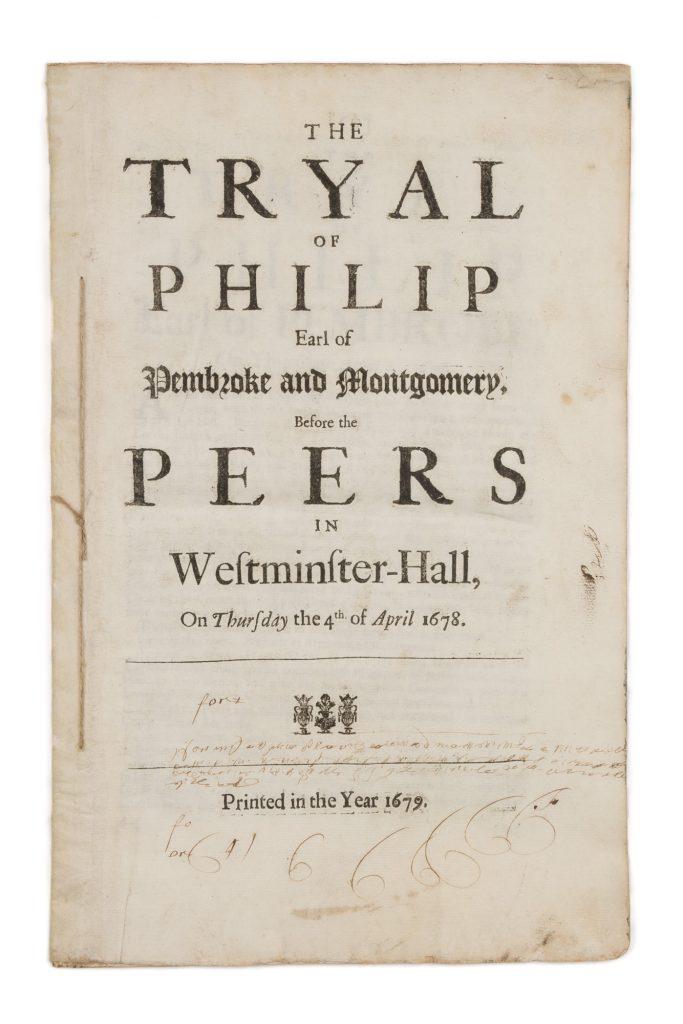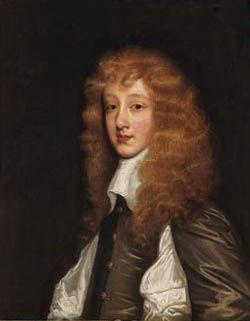Table of Contents
- Philip Herbert, 7th Earl of Pembroke, 4th Earl of Montgomery
- Career
- Criminal record
- Sir Edmund Godfrey
- Last Murder, Final Years, Death
Philip Herbert, 7th Earl of Pembroke, 4th Earl of Montgomery
Philip Herbert, known as the 7th Earl of Pembroke and 4th Earl of Montgomery, was a notable English nobleman and statesman. Upon the passing of his brother, William Herbert, the 6th Earl of Pembroke, on July 8, 1674, Philip inherited the prestigious titles and vast estates associated with both earldoms.

Regrettably, Philip Herbert was marred by a propensity for aggression and found himself entangled in a dark chapter of history as a convicted perpetrator of murder. His notoriety has led to his moniker as “the infamous Earl of Pembroke.”
Baptized on January 5th and raised at Wilton House in Wiltshire, Pembroke was the son of Philip Herbert, the 5th Earl of Pembroke. He held the position of eldest son from his father’s second union with Katherine Villiers, who was the daughter of Sir William Villiers and Rebecca Roper.
As he matured, Herbert was noted for inheriting a tendency toward mental instability, a trait that could be traced back to his grandfather Philip Herbert, the 4th Earl of Pembroke. Both figures displayed inclinations towards sudden and unwarranted outbursts of violence; however, it was the grandson who exhibited a notably heightened degree of such aggression.
Career
On July 8, 1674, Herbert ascended to the titles of Earl of Pembroke and Earl of Montgomery, taking over from his elder half-brother William. At the youthful age of twenty-two, he assumed these positions. Later that same year, on December 17, Herbert entered into marriage with Henrietta de Kéroualle, who happened to be the sister of Louise de Kéroualle, Charles II’s mistress.

This marital union bore a child in the form of Herbert’s sole offspring, a daughter named Charlotte. She entered the bonds of matrimony twice: first with John Jeffreys, 2nd Baron Jeffreys, the son of the infamous ‘hanging judge,’ and subsequently with Thomas Windsor, 1st Viscount Windsor.
Pembroke undertook significant roles throughout his life, including serving as the Custos Rotulorum, which essentially made him the “Keeper of the Rolls,” for Pembrokeshire and Glamorgan starting from 1674. He continued to expand his responsibilities, becoming the Custos Rotulorum and Lord Lieutenant of Wiltshire from May 20, 1675, until the time of his demise.
Criminal record
From his early years onward, particularly when under the influence of alcohol, he was prone to bouts of aggression that may have been inherited from his grandfather, the 4th Earl, renowned for sudden and unprovoked attacks on his peers.
Philip Herbert was responsible for multiple assaults that had the potential to end fatally. In 1677, he came close to killing a Mr. Vaughan in a duel.
On January 28, 1678, Charles II, a man not easily shocked, imprisoned him in the Tower of London “due to the utterance of heinous and blasphemous language, and other actions verified by oath, unsuitable for recounting in any Christian gathering.”
One of the specific accusations was the “abuse of the Sacrament of the celebration of the Lord’s Supper.” Pembroke presented a petition to the House of Lords, denying all allegations and beseeching his fellow peers not to “entertain the accusations or consider your petitioner capable of such a horrendous crime.”
The Lords subsequently requested Pembroke’s release, with seven bishops and the Duke of York in dissent. The king granted Pembroke release on January 30.
However, less than a week later, on February 5, a man named Philip Rycault lodged a complaint with the House of Lords, asserting that Pembroke had assaulted him on the Strand. The House instructed Pembroke to provide £2000 that he would thereafter keep the peace.
Unfortunately, by that time, Pembroke had already taken the life of Nathaniel Cony. He fatally struck and kicked Cony in a tavern without any apparent justification. A few days later, a grand jury in Middlesex indicted him for murder.

He was subsequently tried by his peers on 4 April 1678 and found not guilty of murder (by eighteen votes to six), but guilty of manslaughter. He successfully pleaded Privilege of peerage (i.e. the right to escape punishment for one’s first offence), and he was discharged on payment of all fees.
The Lord High Steward, the Duke of Ormonde, who presided at the trial, warned Pembroke that “his lordship would do well to take notice that no man could have the benefit of that statute but once”.
Pembroke, however, was incorrigible, and shortly afterwards made a savage assault on Charles Sackville, 6th Earl of Dorset, with whom he was engaged in a lawsuit.
Sir Edmund Godfrey
On October 17, 1678, a pivotal event occurred. Sir Edmund Godfrey, who had previously served as the foreman of the grand jury that indicted Pembroke for the murder of Nathaniel Cony, was discovered lifeless in a ditch atop Primrose Hill. He had been impaled by his own sword. This puzzling demise ignited a vehement anti-Roman Catholic uproar, famously referred to as the Popish Plot.
Delving into the intricacies of Godfrey’s death, author John Dickson Carr meticulously examines the contemporaneous evidence. Carr’s exhaustive analysis leads him to assert that Pembroke was the culprit behind Godfrey’s demise, driven by a desire for vengeance. This theory gains substantial traction as historian Hugh Ross Williamson lends his support to it.
While acknowledging certain complexities with this theory, another eminent historian, John Philipps Kenyon, concurs that among all the potential suspects, Pembroke emerges as the one with the most compelling motive to commit the murder of Godfrey.
Last Murder, Final Years, Death
On the 18th of August 1680, Pembroke took the life of William Smeeth, an officer of the watch, after a night of heavy drinking at a tavern in Turnham Green, London.
Subsequently, on the 21st of June 1681, the grand jury of Middlesex once again charged him with murder. Despite Ormonde’s prior warning, Pembroke could not invoke the privilege of peerage for a second time, leading him to briefly flee the country.
However, in a remarkable turn of events, a petition signed by twenty-four of his fellow peers was presented to the king, resulting in a royal pardon being granted to him.
Pembroke passed away at the age of 30 on the 29th of August 1683, leaving his brother Thomas to succeed him. Thomas sought permission from the House of Lords to sell certain portions of his late brother’s estates in order to provide for his niece, Philip Herbert daughter Lady Charlotte. Philip was laid to rest in Salisbury Cathedral.
